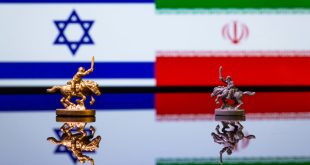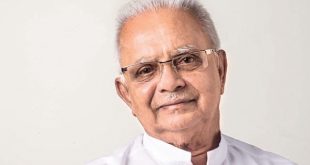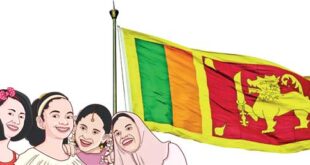Washington, DC – An argument could be made that the Middle East, as the birthplace of the Abrahamic religions, is a centre of dialogue between Muslims and Christians. Where their holiest places of worship and pilgrimage exist, Muslims and Christians have provided models of historical co-existence and cooperation. But when there is tension, either for religious reasons or when sacred religious language and symbols are abused for more profane purposes, the Middle East has just as easily provided models of intolerance, and certainly of violent confrontation.
It seems that across the Middle East our levels of inter-communal diversity and pluralism is limited compared to elsewhere. For us, pluralism means the co-existence of up to two or three communities, whereas in Southeast Asia co-existence can involve dozens of multi-cultural, multi-ethnic or multi-religious communities.
For the Muslims and Christians in Southeast Asia, pluralism means a very different thing. Not only is there more widespread interaction between religious traditions outside of Abrahamic monotheism, but in some countries, Christians and Muslims collectively make up the minority in majority Buddhist, Hindu or non-religious nations.
This dynamic may provide a fresh way of looking at interfaith relations.
In a panel discussion hosted by the Prince Alwaleed Bin Talal Center for Muslim-Christian Understanding at Georgetown University on 19 March 2009, five Muslim scholars from Southeast Asia spoke about “Pluralism and Democracy in Southeast Asian Islam”. As Muslim voices emanating from a region that is home to some of the largest Muslim populations in the world, they provided an alternative to the experience of Arab/Middle Eastern Muslims, particularly as they relate to non-Muslims.
Their humbling message was clear: Muslim-“other” encounters in Asia provide a much needed, but often ignored, model of pluralism.
For instance, Chaiwat Satha-Anand, professor of political science at Thammasat University in Thailand, described the extent to which Muslim communities in Southeast Asia interacted with Buddhist culture and learned from the philosophy, language and outlook of its adherents, as well as Buddhist understanding of the root causes of conflict and violence.
When asked on Thai TV shortly after 9/11 how the world should respond to this violence committed by Muslims, Satha-Anand responded: “By being a little more Buddhist.” Buddhism lies largely outside what is often framed as a two-sided clash of civilisations between Islam and the Christian West. As a “third side”, it may be optimally placed to moderate differences if Muslims and Christians are open to learning from Buddhists and Buddhist teachings.
But more importantly, it is Buddhism’s understanding of causality and “dependent origination” – a deep inspection of the root causes that lead to certain actions or reactions – that is key. Using the example of terror or violence, Satha-Anand argued that Buddhism finds the causes of these phenomena predominantly in injustice – an argument that can find significant resonance in the Middle East.
Another speaker, Mohammed Hannan Hassan, assistant director of education and head of the Madrasah Strategic Unit at the Islamic Religious Council of Singapore, accompanies students, scholars and public servants from Singapore to the Middle East on exchange programmes to study Islam. He feels that these students are able to model and convey a different example of pluralism and interfaith encounter to their Middle Eastern counterparts.
Having seen first hand the impact of interfaith, intercultural exchanges between Middle Eastern and Western youth, I think the time has come for Middle Eastern youth to also proactively engage with their counterparts in Southeast Asia, sharing ideas and breaking down dogmas. This can be done in both formal educational settings, such as university study abroad programmes, as well as through informal exchange settings, such as summer camps. It is on this basis that Hassan’s call for the Middle East to learn from Islam and multiculturalism in Southeast Asia can find resonance in the region.
For those seeking a new model, a new paradigm of interfaith cooperation in the Middle East, the Southeast Asian context should be the first place to look. The lesson for practitioners of interfaith dialogue in the Middle East might be “Go east, young man (and woman).” It is there that we find not only the complexity to which we’re accustomed, but also its accompanying pluralism and wealth of interfaith encounters.
* Samuel Rizk is a visiting researcher at Georgetown University’s Prince Alwaleed Bin Talal Center for Muslim Christian Dialogue and a PhD candidate at George Mason University’s Institute for Conflict Analysis and Resolution. This article was written for the Common Ground News Service (CGNews).
Source: Common Ground News Service (CGNews), 31 March 2009, www.commongroundnews.org
Copyright permission is granted for publication.
 Sri lanka Muslims Web Portal Diversity and Inclusiveness
Sri lanka Muslims Web Portal Diversity and Inclusiveness



